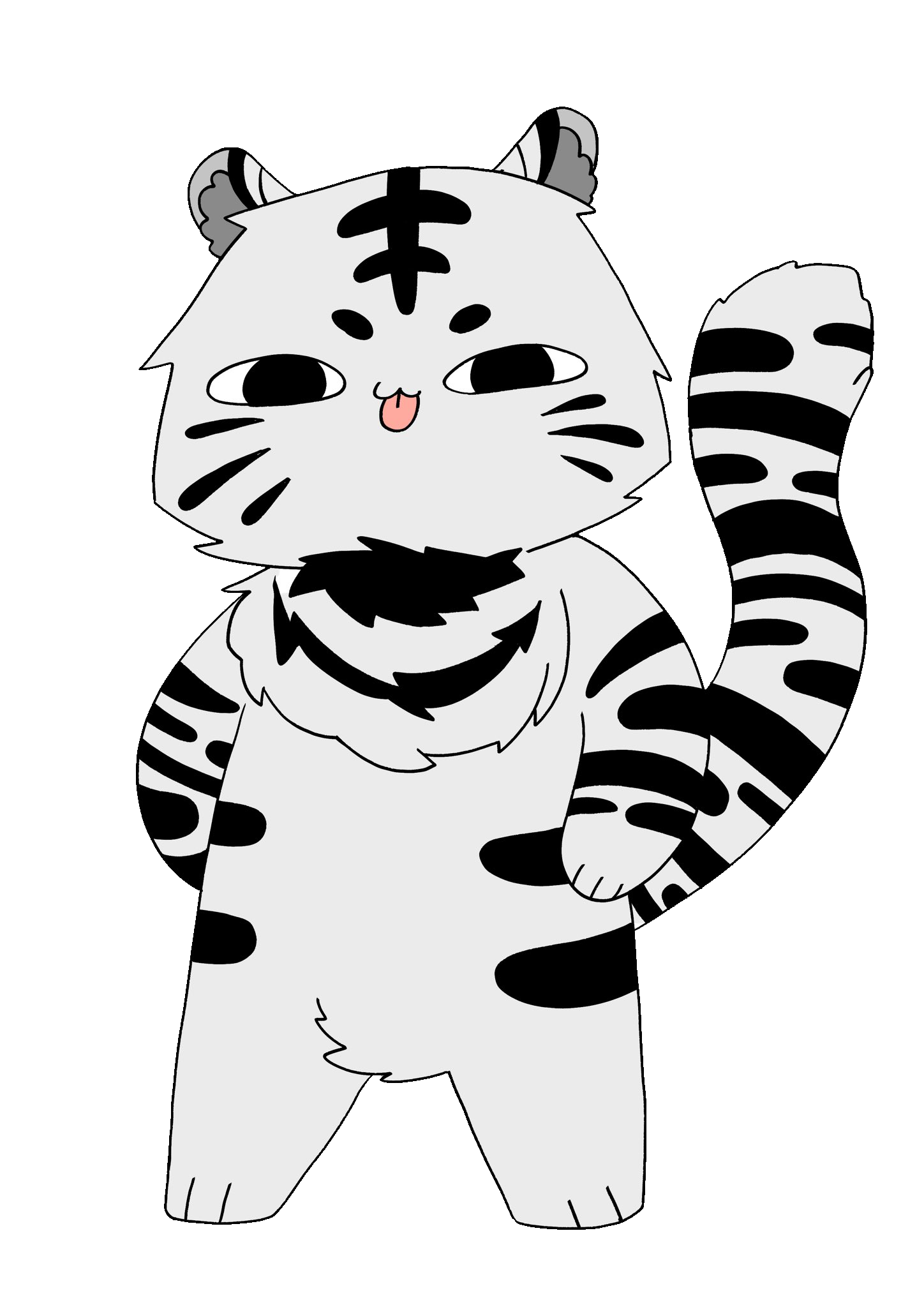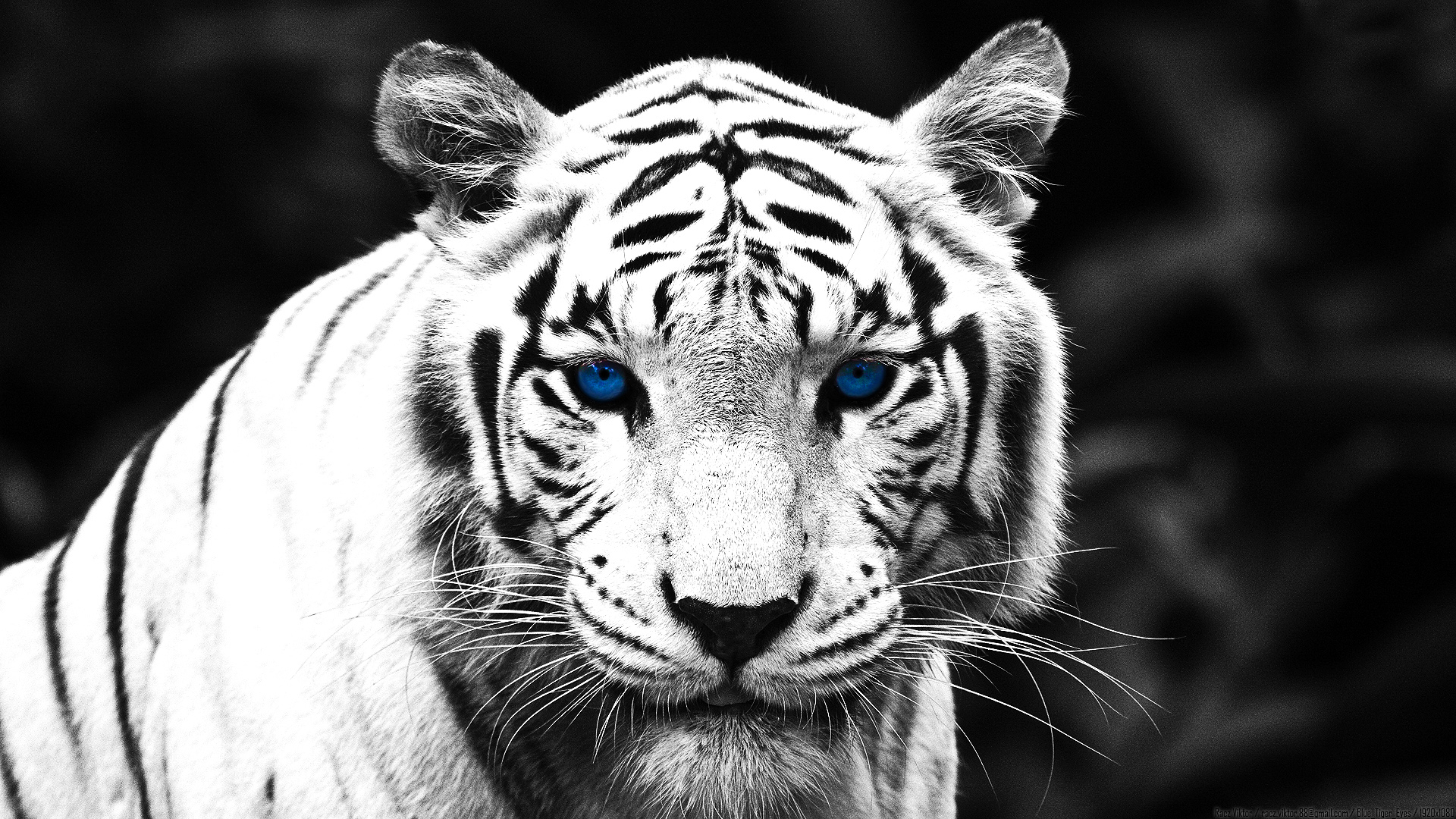Unveiling Baihu Shaonu: Myth, Symbolism, And Cultural Perceptions
The phrase "Baihu Shaonu" (白虎 少女), or "White Tiger Girl," carries layers of meaning, weaving together ancient Chinese mythology, profound cultural symbolism, and, in some contexts, a controversial modern slang term. Understanding this phrase requires a journey through millennia of Chinese thought, from the cosmic alignment of celestial beasts to the evolution of language and societal perceptions. This article aims to disentangle these intricate threads, providing a comprehensive and respectful exploration of what "Baihu Shaonu" truly represents in its multifaceted forms.
Far from a simple translation, "Baihu Shaonu" encapsulates a rich tapestry of beliefs and interpretations. On one hand, it evokes the grandeur of one of China's most revered mythical creatures—the White Tiger—a symbol of immense power, protection, and cosmic order. On the other, it touches upon a specific, often misunderstood, physical characteristic in women, rooted in ancient superstitions and evolving into modern colloquialisms. Join us as we delve into the depths of this fascinating term, examining its origins, cultural significance, and the importance of informed understanding.
Table of Contents
- The Majestic Baihu: A Pillar of Chinese Mythology
- Baihu's Enduring Legacy in Culture and Art
- Decoding "Baihu Shaonu": A Term with Dual Meanings
- Understanding Ambiguous Terminology: Historical Context and Modern Perspectives
- The Intersection of Myth, Gender, and Perception
- Why Understanding "Baihu Shaonu" Matters
- Beyond the Taboo: Promoting Informed Discourse
- Conclusion: Embracing Complexity in Cultural Narratives
The Majestic Baihu: A Pillar of Chinese Mythology
At the heart of "Baihu Shaonu" lies the formidable figure of Baihu (白虎), the White Tiger, one of the revered Four Symbols (Sì Xiàng) in ancient Chinese mythology. These four celestial beasts—the Azure Dragon (Qinglong), Vermilion Bird (Zhuque), Black Tortoise (Xuanwu), and White Tiger—are cosmic guardians, each presiding over a cardinal direction and a season. Baihu stands as the deity of the West and the embodiment of autumn, representing a profound connection to the natural world and the cosmic order.
Origins and Cosmic Significance
The origins of the White Tiger are deeply rooted in ancient Chinese astronomy and star worship. In the system of the Twenty-Eight Mansions (Ershiba Xiu), which divides the celestial sphere, Baihu is the collective name for the seven Western Mansions: Kui (Straddling Leg), Lou (Bond), Wei (Stomach), Mao (Pleiades), Bi (Net), Zi (Beak), and Shen (Orion). This celestial alignment positioned the White Tiger as a powerful force in the heavens, influencing earthly events and human destiny. Daoism, a native Chinese religion, embraced Baihu, referring to it as "Jianbing" and sometimes even "Dijun" (Emperor Lord) in various Daoist scriptures, further cementing its divine status.
According to ancient texts like "Zhongxing Zhengxiang" (中兴征祥), the White Tiger is described as having a body as white as snow, without any杂毛 (miscellaneous fur). This pristine appearance underscores its purity and divine nature. Its association with the West also links it to the element of metal and the color white, embodying strength, purity, and the onset of the harvest season. The White Tiger's presence in the Four Symbols system highlights the ancient Chinese understanding of a balanced and interconnected universe, where cosmic forces directly influenced life on Earth.
Guardian of the West: Powers and Symbolism
Beyond its celestial role, the White Tiger is a deity of immense power and profound symbolism. It is widely regarded as the god of warfare and battle, possessing unparalleled strength to ward off evil spirits and protect against disasters. This association made it a fearsome yet benevolent protector, capable of striking fear into the hearts of malevolent forces while safeguarding the righteous. Its protective qualities extend to personal well-being, with beliefs that Baihu can bring good fortune, promote wealth, and even facilitate harmonious relationships.
The White Tiger's multifaceted powers include:
- Averting Evil: Its formidable presence is believed to deter malevolent spirits and negative energies.
- Dispelling Disasters: It offers protection from natural calamities and unforeseen misfortunes.
- Praying for Abundance: Associated with the harvest season, it symbolizes prosperity and bountiful returns.
- Punishing Evil and Promoting Good: As a deity of justice, it ensures that good triumphs over evil.
- Attracting Wealth and Prosperity: Its auspicious nature is believed to draw financial success.
- Fostering Good Marriages: It can help in forming harmonious and lasting unions.
Baihu's Enduring Legacy in Culture and Art
The White Tiger's significance extends far beyond ancient myths, permeating various aspects of Chinese culture, philosophy, and art. Its image and symbolism have been continuously reinterpreted and celebrated throughout history, reflecting evolving societal values while retaining its core essence as a powerful guardian.
From Ancient Beliefs to Modern Interpretations
From ancient bronze artifacts to intricate temple carvings, the White Tiger has been a recurring motif, symbolizing strength, protection, and cosmic balance. Its presence in traditional Chinese art often depicts it in dynamic poses, emphasizing its fierce yet noble demeanor. In philosophical traditions, Baihu's association with the West and autumn aligns with concepts of introspection, harvest, and the cycle of life and death, providing a deeper layer of meaning to its symbolism.
Over centuries, the reverence for the White Tiger has evolved. While it remains a potent symbol of protection and good fortune, its image has also been adapted into various forms of storytelling and artistic expression. This cultural evolution showcases how ancient symbols can remain relevant and resonant across different eras, adapting to new contexts while preserving their fundamental significance. The concept of "Baihu Shaonu" itself, when interpreted through a mythological lens, could represent a young woman embodying the White Tiger's qualities—strength, purity, and perhaps even a fierce protective nature.
The White Tiger in Popular Culture
In contemporary culture, the White Tiger continues to inspire, appearing in various forms of media, including literature, video games, and animation. From majestic depictions in fantasy novels to powerful characters in martial arts films, Baihu's image is often invoked to represent ultimate strength, unwavering loyalty, or a mystical guardian. While specific "Baihu Shaonu" characters might appear in anime or manga (e.g., "White Tiger Princess Anime" or "White Tiger Beast Girl"), these interpretations often draw upon the mythical creature's attributes, translating its power and symbolism into compelling fictional narratives. These modern adaptations help to keep the ancient legend alive, introducing new generations to the rich tapestry of Chinese mythology.
Decoding "Baihu Shaonu": A Term with Dual Meanings
The phrase "Baihu Shaonu" (白虎 少女) itself presents a fascinating linguistic and cultural duality. On one hand, it could conceptually refer to a "White Tiger Girl" in the context of the mythical beast, implying a girl embodying its characteristics. On the other, and more controversially, it is a specific slang term with a distinct and often misunderstood meaning in certain contexts. Navigating these interpretations is crucial for a complete understanding of the term.
The Mythological "White Tiger Girl": Embodiment of Power?
If we interpret "Baihu Shaonu" purely through the lens of Chinese mythology, it could conjure the image of a young woman who possesses the attributes of the White Tiger. This might include qualities such as:
- Strength and Resilience: Like the powerful guardian beast.
- Purity and Nobility: Reflecting the pristine, snow-white fur of the mythical creature.
- Protective Nature: A fierce loyalty to those she cares for.
- Auspiciousness: Bringing good fortune or warding off negativity.
"Baihu" in Erotology: Unpacking a Controversial Term
However, the term "Baihu" also carries a very different, more specific meaning, particularly in the realm of erotology and colloquial language. In this context, "Baihu" refers to a woman who has no pubic hair. This usage, originating from China, has a historical basis rooted in ancient superstitions and a lack of medical understanding.
Historically, in ancient China, the absence of pubic hair in women was often considered an inauspicious sign. Without the advancements of modern medicine, people attributed such conditions to negative influences or "evil spirits," deeming them unlucky or a symbol of ill omen. Consequently, women without pubic hair were labeled "Baihu," carrying a connotation of being undesirable or "unclean" due to these superstitious beliefs. This historical context is vital for understanding why the term, despite its mythological namesake, acquired a negative and often stigmatizing meaning when applied to individuals.
Understanding Ambiguous Terminology: Historical Context and Modern Perspectives
The dual nature of "Baihu" – a revered mythical beast versus a slang term for a physiological condition – highlights the complexities of language and cultural evolution. It's crucial to differentiate between these meanings and to approach the latter with sensitivity and accurate information, especially when discussing "Baihu Shaonu."
Ancient Misconceptions vs. Modern Medical Understanding
The ancient Chinese perception of "Baihu" as an inauspicious sign for women without pubic hair was a product of its time. In the absence of scientific knowledge, cultural beliefs and superstitions filled the void, leading to misconceptions and social stigma. Today, modern medicine provides a clear understanding of this condition, known as pubic alopecia or hypotrichosis of the pubic area.
Medical science confirms that the absence of pubic hair in women is, in most cases, a physiological variation. It is generally not indicative of any underlying serious illness, nor does it typically affect a woman's overall health, hormonal balance, or fertility. It can be a natural genetic variation, or in some rarer cases, a symptom of certain medical conditions, but these are often identifiable through proper medical diagnosis. The key takeaway is that for the vast majority of individuals, being a "Baihu" in the literal sense (lacking pubic hair) is a normal, healthy physiological state with no negative health implications, directly contradicting ancient superstitious beliefs. Therefore, the ancient association with "evil spirits" or "bad luck" is entirely unfounded from a scientific perspective.
Navigating Cultural Sensitivities and Misinformation
Given the historical baggage and the modern usage of "Baihu" as a slang term, navigating discussions around "Baihu Shaonu" requires significant cultural sensitivity. The term, when used in its derogatory or objectifying sense, can perpetuate harmful stereotypes and contribute to body shaming. It's important to recognize that while some online content might exploit or sensationalize this aspect (e.g., "White Tiger Loli Girl pictures" or explicit media), such portrayals are often divorced from respectful discourse and contribute to misinformation.
Promoting accurate information is paramount. Understanding that physiological variations are natural and do not diminish a person's worth or health helps to dismantle the stigma associated with the term. Instead of focusing on the sensational or the explicit, a responsible approach emphasizes the cultural and historical origins of the term, while simultaneously correcting ancient misconceptions with modern scientific understanding. This balanced perspective allows for a more informed and empathetic discussion, moving beyond mere curiosity to genuine cultural literacy.
The Intersection of Myth, Gender, and Perception
The journey through the meanings of "Baihu Shaonu" reveals a fascinating intersection of ancient mythology, gender perceptions, and linguistic evolution. The White Tiger, a powerful and revered symbol, stands in stark contrast to the historical stigma attached to the "Baihu" label for women. This dichotomy highlights how cultural narratives and societal beliefs can shape the interpretation of physical attributes, sometimes leading to misjudgment and discrimination.
The mythological White Tiger embodies strength, protection, and cosmic balance – qualities that are universally admired. When applied to a "Shaonu" (girl), it could conceptually elevate her to a position of power and dignity. However, the slang term "Baihu" for a woman without pubic hair, born from ancient medical ignorance, historically subjected women to unfounded superstitions. This contrast underscores how a single term can carry vastly different connotations depending on the context and the lens through which it is viewed.
It also prompts reflection on how societies perceive and categorize women's bodies. The historical perception of "Baihu" as inauspicious is a clear example of how physical differences can be culturally stigmatized, often without scientific basis. This historical context is crucial for understanding the term's negative connotations and for advocating for more inclusive and informed perspectives today. Recognizing these historical and cultural layers allows us to appreciate the complexity of language and its impact on individual and collective identities.
Why Understanding "Baihu Shaonu" Matters
Beyond academic curiosity, a nuanced understanding of "Baihu Shaonu" holds significant relevance for a general audience. Firstly, it offers a window into the richness and complexity of Chinese culture and mythology. Appreciating the profound symbolism of the White Tiger enriches our global cultural literacy, allowing us to connect with ancient belief systems that continue to influence contemporary thought and art.
Secondly, and perhaps more critically, understanding the slang meaning of "Baihu" and its historical context is vital for promoting body positivity and combating misinformation. In an era where information spreads rapidly, distinguishing between myth, historical superstition, and scientific fact is paramount. By recognizing that the absence of pubic hair is typically a normal physiological variation, we can challenge outdated prejudices and foster a more accepting environment. This knowledge empowers individuals to understand their own bodies better and to resist societal pressures or stigmas based on misinformation.
Furthermore, this exploration encourages critical thinking about how language shapes perception. A single term, "Baihu Shaonu," can evoke images of powerful mythical creatures or, conversely, perpetuate harmful stereotypes. Being aware of these dual meanings helps us to use language responsibly and to interpret media and cultural references with greater discernment. It underscores the importance of context in communication and the need for empathy when discussing sensitive topics related to the human body and cultural beliefs.
Beyond the Taboo: Promoting Informed Discourse
To move beyond the sensational and often misinformed interpretations of "Baihu Shaonu," it is essential to foster open and respectful discourse. This means:
- Prioritizing Education: Disseminating accurate information about both Chinese mythology and human biology.
- Challenging Stereotypes: Actively questioning and refuting outdated or harmful beliefs about physical appearance.
- Encouraging Empathy: Recognizing the potential for stigma and ensuring discussions are conducted with sensitivity and respect for all individuals.
- Promoting Media Literacy: Critically evaluating how terms and concepts are portrayed in various forms of media, especially those that might sensationalize or exploit.
Conclusion: Embracing Complexity in Cultural Narratives
The phrase "Baihu Shaonu" is a compelling example of how language can be imbued with layers of meaning, reflecting both the grandeur of ancient mythology and the complexities of human perception. From the revered White Tiger, a powerful guardian embodying the essence of the West and autumn, to the colloquial term for women without pubic hair rooted in historical misconceptions, "Baihu Shaonu" invites us to explore the intricate connections between culture, belief, and biology.
Understanding this term means appreciating the majestic symbolism of one of China's Four Symbols while simultaneously recognizing and dispelling the outdated superstitions that once surrounded a natural physiological variation. It’s a call to embrace cultural literacy, to challenge misinformation, and to approach discussions about the human body with respect and informed understanding. By doing so, we not only honor the rich tapestry of Chinese heritage but also contribute to a more empathetic and enlightened global community. We encourage you to delve deeper into the fascinating world of Chinese mythology and to continue seeking knowledge that promotes understanding and respect for all cultural nuances. What are your thoughts on the multifaceted meanings of "Baihu Shaonu"? Share your insights in the comments below!
- Nastya Williams
- Carmaxlla Onlyfans
- Lindafromtheplayroom Onlyfans
- Mark Anthonyfernandezscandal
- Boxers Hk

白虎

About – Baihu 白虎 – Medium

白虎 高清壁纸 | 桌面背景 | 1920x1080 | ID:428587 - Wallpaper Abyss